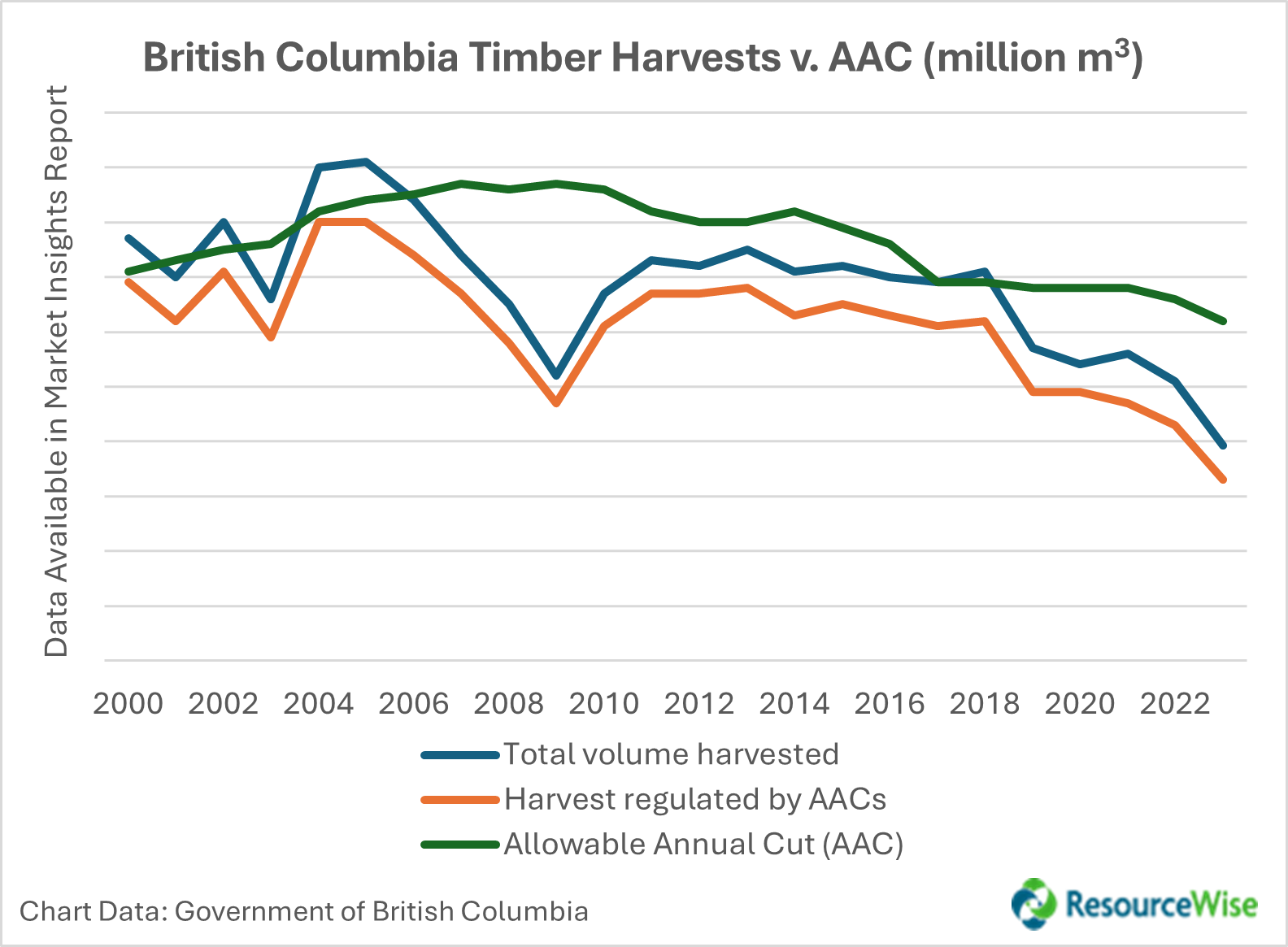2 min read
An Overview of British Columbia's Timber Supply Crisis
ResourceWise
:
Jun 3, 2024 12:00:00 AM

The forest industry in British Columbia (BC) is currently grappling with the closure of sawmills, stemming from a mix of limited timber resources, high costs, weak lumber markets, and governmental regulations.
Since 2013, British Columbia's actual timber harvest has seen a steady decline, plummeting from 75 million m3 to a meager 39 million m3 in 2023. This decrease in timber production can be attributed to various factors, including the repercussions of the bark beetle epidemic in the 1990s and early 2000s. The infestation prompted a surge in logging to salvage damaged timber before it was rendered totally unusable.

The Factors at Play
Added to this is the impact of the COVID-19 pandemic. A report from the Canadian Centre for Policy Alternatives (CCPA) suggests that the pandemic’s role in skyrocketing lumber demand and prices, along with the BC government’s response, have further complicated matters.
Industry stakeholders have also expressed apprehension regarding the provincial government's policy adjustments and heightened regulations. They claim such regulations hinder the consistent availability of economic fiber. This has been linked to the closure of sawmills alongside the ongoing decrease in harvest levels.
The provincial government, on the other hand, emphasizes its focus on stabilizing the sector, protecting forest biodiversity, increasing First Nations' opportunities, and promoting value-added wood manufacturing to protect forest sector jobs. However, these initiatives bring their own challenges to the timber supply.
Despite the complications, there is optimism about the recent appointment of Andrew Mercier as Minister of State for Sustainable Forestry Innovation. Tasked with addressing the pressing demand for wood in the forest sector, Mercier's appointment could potentially mark the beginning of transformative change. Those within the industry eagerly wait to see if this will lead to the much-needed, swift action they hope to see.
The Importance of Tackling these Challenges
Addressing the factors impacting British Columbia's timber supply is crucial for several reasons:
- The forestry sector is a significant contributor to the Canadian economy, providing numerous jobs and supporting communities (particularly in rural areas). A stable timber supply ensures the continued operation of sawmills and related industries, safeguarding livelihoods and regional economic health.
- Sustainable forest management is key to maintaining biodiversity and environmental health. By responsibly managing timber resources, Canada can protect its rich natural heritage while meeting the demands of the timber market.
- An adequate and reliable timber supply supports the growing trend towards sustainable building practices. Timber is a renewable resource that, when managed correctly, offers a more environmentally friendly alternative to other construction materials with higher carbon footprints. Ensuring a stable timber supply is not only vital for economic reasons; it also promotes ecological sustainability and the development of green building initiatives.
Dive into the Details with Our Market Insights Report
This overview merely scratches the surface of the complexities involved in BC's timber supply crisis.
For a more in-depth analysis, including expert insights and thorough data examination, download our full Market Insights report "British Columbia’s Government Urged to Move Faster to Stabilize Timber Supply as More Lumber, Pulp and Paper Mills Cut Back or Close." The report will help you gain a better understanding of the multifaceted issues at play and make informed decisions in an ever-changing marketplace.





